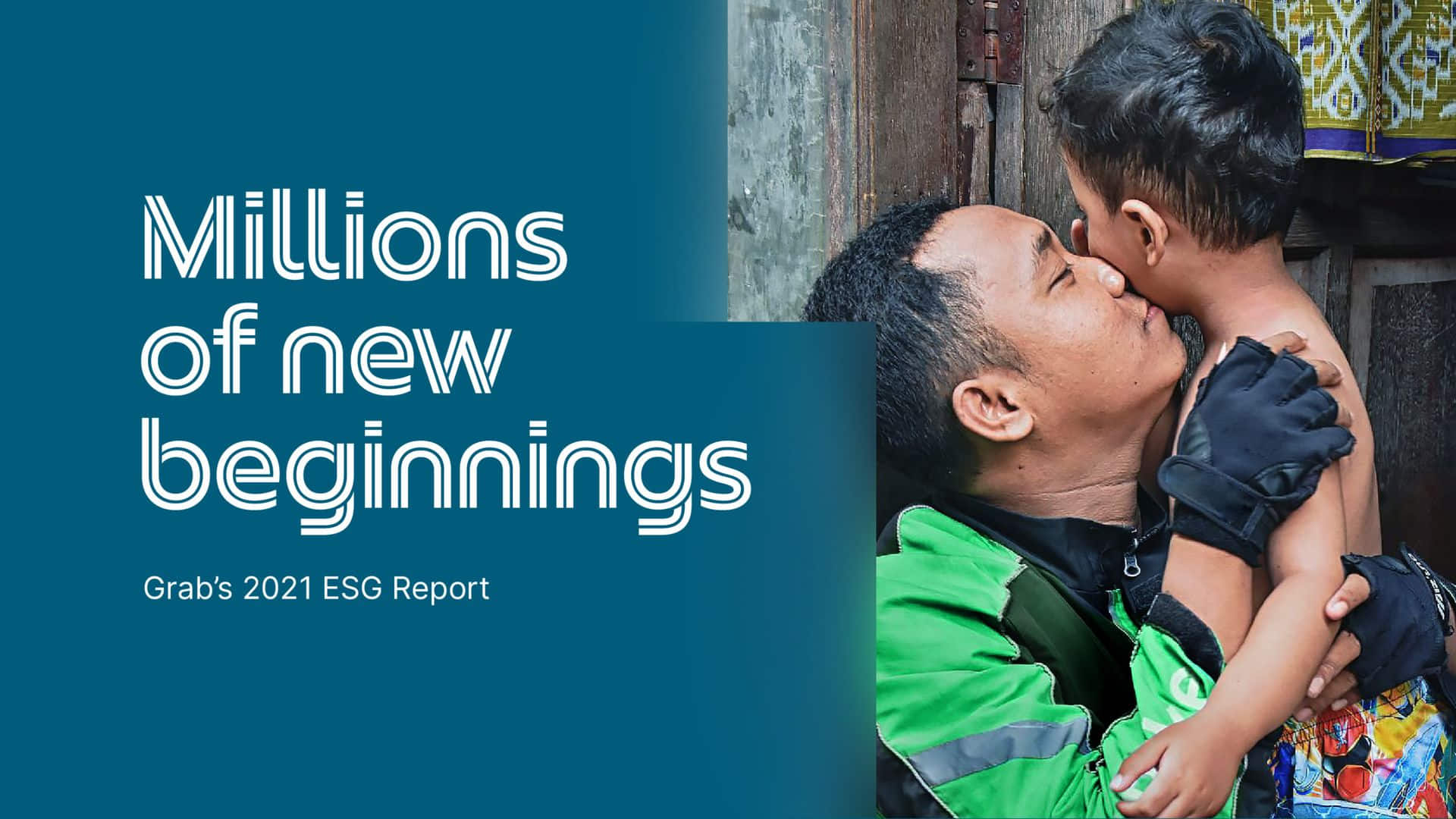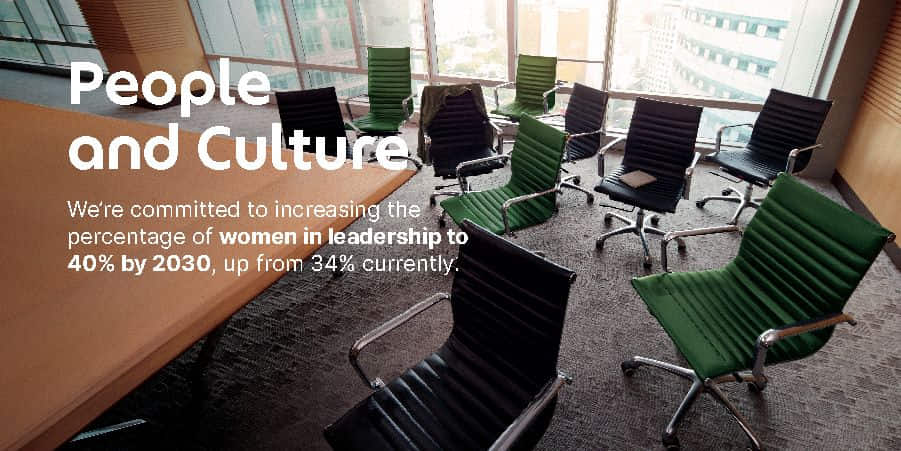Grab Announces Three ESG Goals for Sustainable and Inclusive Growth
Commits to doubling the number of marginalised individuals earning an income on its platform by 2025, achieving 40% female leadership by 2030 and becoming carbon neutral by 2040 Rolls out new programme, Grab Access, to make the platform more accessible […]

- Commits to doubling the number of marginalised individuals earning an income on its platform by 2025, achieving 40% female leadership by 2030 and becoming carbon neutral by 2040
- Rolls out new programme, Grab Access, to make the platform more accessible for marginalised individuals
- Consumers can view their personal impact report on the Grab app from 17 May
SINGAPORE, May 12, 2022 – Grab, Southeast Asia’s leading superapp, today announced three goals to drive sustainable and inclusive growth in Southeast Asia. The new goals are: 1) doubling the number of marginalised individuals earning income on its platform by 2025, 2) reaching 40% female leadership by 2030, and 3) achieving carbon neutrality by 2040. These goals were unveiled in the company’s annual Environment, Social and Governance (ESG) report released today.
“We have to confront two important realities in a rapidly growing digital economy. First, an unequal access to opportunities, and second, an acceleration of climate change. This is why we are focusing our ESG goals on driving inclusive growth and closely managing the environmental footprint of our ecosystem. Our journey to becoming a triple bottom line company reflects our strong belief that the long-term success of our business is intricately linked to the welfare of the communities we serve, and the health of our planet,” Anthony Tan, Co-Founder and Group Chief Executive Officer, Grab.
Grab’s ESG report also tracked the company’s impact in 2021 across key priority areas:

A hi-res version of this infographic can be downloaded here
- Grab continues to facilitate economic growth and uplift communities, bringing over 680,000 small merchant-partners[1] onto the platform, and upskilling over 780,000 driver-partners through GrabAcademy[2]. In 2021, Grab’s partners earned US$8.9 billion on the platform, a 24% increase from 2020[3]. The company also contributed US$20 million from the GrabForGood fund to provide free Covid-19 vaccinations for partners.
- Ensuring the safety of Grab’s partners and consumers remains a top priority for Grab. On-demand deliveries boomed at the height of the pandemic. However, the industry also saw an increase in road traffic accidents during this period of time. Through additional safety measures and training, Grab’s accident rate for its delivery segment[4] improved by 36% year-on-year, even against strong growth in its delivery business. In 2021, more than 99.99% of Grab’s rides occurred without any incident[5].
- Grab is committed to reducing greenhouse gas emissions and plastic waste. In 2021, Grab switched to powering all its corporate offices with 100% renewable energy, and launched a 100% low-emissions 2-wheel rental fleet in Indonesia.Grab’s carbon offset and cutlery toggle features enabled users to make greener choices in everyday decisions. The features contributed to the planting of over 42,000 trees regionally, offsetted more than 2,300 tonnes of greenhouse gas emissions through carbon credits[6], and reduced the use of more than 774 million sets of single-use cutlery.
New commitments as a triple bottom line company
Grab continues to invest in Southeast Asia. Its latest ESG goals ensure the company’s growth and success have a positive impact on the communities it operates in:
1. Driving digital inclusion for marginalised groups

According to the World Bank, one billion people, or 15% of the world’s population, experience some form of disability. The UN Economic and Social Commission for Asia and the Pacific estimates that persons with disabilities (PWD) are two to six times less likely to be employed as compared to persons without disabilities.
Commenting on this, Charles Thin, a PWD driver-partner of more than four years in Malaysia, said: “There are not many job opportunities for deaf people. Once I got my driving license, I realised I could apply to become a Grab driver. When I was invited to the onboarding session, I was given one-on-one training. That’s when I knew I had Grab’s support. For me, driving is a way to be free. To explore. And now, to be financially independent.”
In a regional survey of driver-partners with disabilities[7], 73% reported that they maintained or increased their earnings by working with Grab. 80% of PWD driver-partners said they felt fulfilled and satisfied with life by working with Grab. Yet, only 2,100 PWDs[8] earn an income on the Grab platform today.
Grab seeks to double the number of marginalised individuals[9] who earn a living through its platform by 2025. To enable this, Grab plans to launch Grab Access, a regional programme to lower the barriers for marginalised individuals to join Grab. The programme will provide these individuals with special financial and training support for a period of time to help them adapt and ease into the platform. Grab Access will roll out first in Indonesia, with other countries to follow this year.
2. Supporting females to grow in the workplace

Grab is committed to working towards increasing the percentage of women on its leadership bench to 40% by 2030, up from 34% currently. This ensures the company has diverse voices in management positions and considers a variety of views in crafting and implementing policies and decisions.
The company will continue to invest in mentorship and leadership programmes to support career development for female employees; create more comprehensive support networks for females in the workforce; invest in proactive measures such as data-driven studies and training programmes to help managers catch and address any unconscious biases that may occur in candidate interviews and performance review processes.
Grab continues to maintain a high gender wage parity, with female employees earning 98 cents to a dollar paid to male employees for performing a similar role at Grab.
3. Managing its environmental impact

Grab is committed to actively manage its carbon footprint, with the goal to become carbon neutral by 2040[10] even as the business continues to grow significantly over the years. It will focus first on implementing measures to reduce emissions before turning to offsets.
As a platform that facilitates on-demand mobility and deliveries, 96% of Grab’s total emissions in 2021 came from vehicles owned and operated by its drivers and delivery-partners. Hence, a core part of Grab’s strategy is to help build an inclusive EV ecosystem that caters to the middle and middle-lower class.
To this end, Grab works with governments, charging infrastructure providers, and automakers across Southeast Asia to conduct EV pilot studies and research; plan and develop EV charging infrastructure and battery swapping stations; financing products to support greater EV adoption, and more. Today, Grab operates the largest ride-hailing EV fleet in Indonesia, comprising around 8,500 electric vehicles.
To reach carbon neutrality by 2040, Grab will:
- Continue to drive the transition to low emission vehicles among its partners, including transitioning 100% of its ride-hailing fleet in Singapore to low emission vehicles by 2030.
- Achieve net zero operational carbon for all premises as a member of EP100, by transitioning all other premises operated by Grab and under its direct control such as data centres and operation hubs to renewable energy by 2030.
- Continue to develop artificial intelligence and machine learning to further optimise for resource efficiency across all areas of its business and operations, such as order batching and ride-sharing to reduce unnecessary travel.
- Work with suppliers and vendors within our value chain to minimise emissions.
To read more about Grab’s ESG report, visit the link here. Images and assets can be downloaded here.
Grab users can check out their personal impact report in the Grab app from 17 May.
[1]Small merchants refers to businesses that are non-chain, non quick service restaurants across our GrabFood and GrabMart offerings
[2]Upskilling and training courses do not include mandatory courses. There are additional courses outside of GrabAcademy that are not included in this count here
[3]‘Driver-partner earnings’ is defined as the fare, bonuses, tips and fees, net of commission. ‘Merchant-partner earnings’ is defined as the total order bill, including taxes charged by the restaurant/merchant net of commission, Grab advertising spend and promotion costs
[4]Includes data from our deliveries business in Indonesia, Singapore, Malaysia, Vietnam, Thailand, Myanmar, Cambodia and the Philippines
[5]Defined as all reported and validated road safety incidents across our mobility and delivery businesses, including road accidents, harassments and crimes
[6]Around 30,000 trees were planted and 2,300 tonnes of verified carbon credits were retired as a result of our carbon offset feature. Grab planted an additional 12,000 trees through internal fundraising activities and partnerships with stakeholders like the government, media and community
[7]Based on an online survey that reached 108 driver-partners with disabilities, conducted by NielsenIQ from 23 December 2021 to 3 January 2022 in Indonesia, Malaysia, Singapore, Philippines and Thailand
[8]Grab driver-, merchant-partners and Kios agents with disabilities and who have had at least one transaction on our platform within the year of 2021
[9]Marginalised individuals may refer to persons with disabilities and other vulnerable groups such as low income, single parent households and more
[10]Applicable where we provide ride-hailing, delivery and financial services through our existing subsidiaries under our operational and management control. Grab’s roadmap and targets are set in consideration of future business growth. We utilised data from 2019 as the baseline for absolute greenhouse gas emissions as 2020 and 2021 was materially impacted due to COVID-19 movement restrictions, where our business saw a significant decrease in our mobility service, the most material contributor to our carbon footprint.





